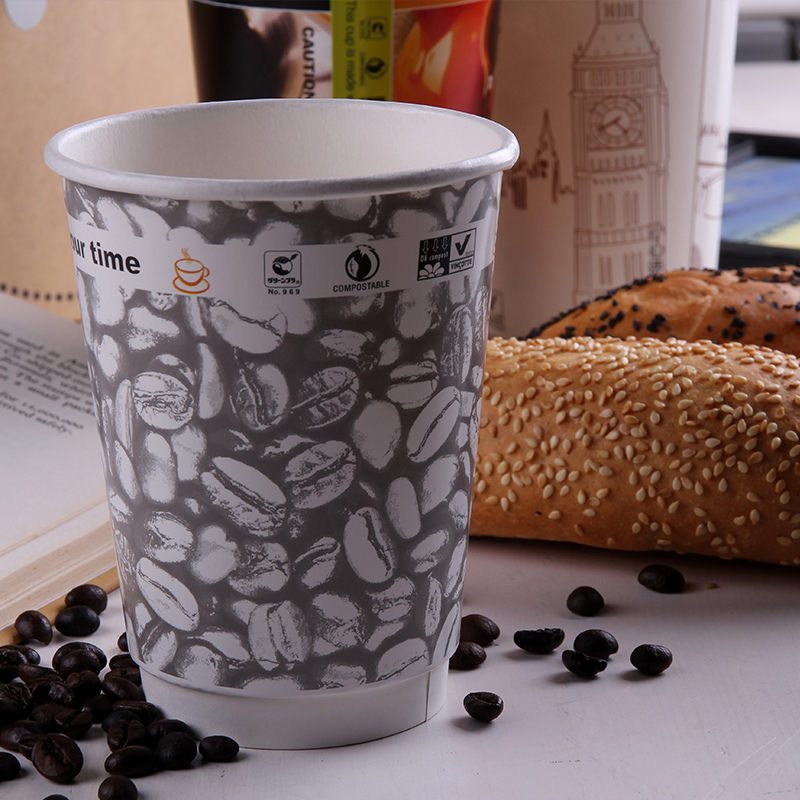
Paper cups or disposable cups are everywhere. You see them in office shops, parties, and even the office. But have you ever questioned how these simple paper cups preserve liquids without leaking? The secret lies in how they're made. Paper, by using itself, cannot hold liquids for long. It absorbs water and will become soggy. So, what makes paper cups waterproof? Let's dive into the details.
The Role of Coatings
The fundamental reason paper cups or coffee cups are water-resistant is that they have a unique coating. This coating acts as a boundary between the fluid and the paper. Most paper cups have a flimsy layer of plastic, generally polyethene, on the internal surface. This plastic layer stops the liquid from seeping through the paper, keeping your drink in the cup and off your arms!
Polyethylene is a protected plastic for food and beverages. It is used because it is bendy, strong, and simple to use. The plastic layer additionally makes the cup sturdy. Without this coating, the paper should get wet, weaken, and fall apart.
How Are Paper Cups Made?
To capture what makes paper cups water-proof, it's fundamental to perceive how they're made. The process begins with big rolls of paper. This paper is generally made from woodproof, which comes from timber.
Forming the Cup: The paper is cut and fashioned into a cup shape. The coating is carried out on the inside of the cup.
Applying the Coating: The coating is applied to the paper before it's fashioned into a cup. For plastic-lined cups, the plastic is melted and unfolded onto the paper. The paper is then cooled, and the plastic solidifies, growing a waterproof layer.
Sealing the Cup: After the paper is covered, it is formed into the shape of a cup. The edges are sealed collectively to save you from leaks. The bottom of the cup is likewise connected and sealed tightly.
Final Touches: The cups are published with designs or trademarks and then ready for use.
The Environmental Impact
While paper cups are convenient, their waterproof coating creates a few challenges. Because of the plastic coating, most paper cups cannot be recycled with ordinary paper. The coating has to be separated from the paper, which calls for special recycling centers.
PLA-coated cups are more environmentally pleasant because they are biodegradable paper cups. However, they should be composted in business composting facilities. They will not spoil quickly in a regular compost pile at home.
Ongoing research is to discover higher, more sustainable coatings for paper cups. Water-based total coatings and different new technologies provide a wish for a more green future.
Why Do We Need Waterproof Paper Cups?
You may wonder, why not simply use regular cups fabricated from plastic or glass? The solution is straightforward: comfort and cost. Paper cups are reasonably priced to provide and easy to dispose of. They are lightweight, making them easy to transport. This is why they're famous at occasions, in office stores, and for takeout beverages.
Moreover, paper cups can be printed with designs and emblems, which is wonderful for branding. They are also a safer alternative for outdoor occasions because they don’t shatter like glass.
Where to buy the paper cups water-proof?
If you’re searching for a pleasant place to shop for waterproof paper cups, look no further than WeiMon. It’s a manufacturer for tremendous paper cups that might be ideal for any event. Their waterproof paper cups are durable, leak-proof, and environmentally friendly. WeiMon has you covered whether you need them for a coffee shop, an occasion, or only for everyday use.
Their extensive choice of waterproof paper cups comes in diverse sizes and designs, ensuring you discover the perfect shape for your needs. Also, our first-class client care makes your purchasing experience simple and bother-free.
How to Dispose of Paper Cups Properly
Since most paper cups have a plastic coating, they want to be disposed of nicely. Here are some hints:
Check for Recycling: Some regions have unique recycling packages for paper cups. Check with your nearest recycling center to check whether they acknowledge them.
Treating the soil: If you have PLA-coated cups, search for a business treating the soil office. These centers can compost the cups well.
Reuse: Even if you used the cup merely for water, consider reusing it. You can use it for crafts or as a plant starter for seedlings.
Reduce Usage: The satisfactory way to help the environment is to reduce the quantity of single-use cups you operate. Bring your reusable cup to coffee stores and events.